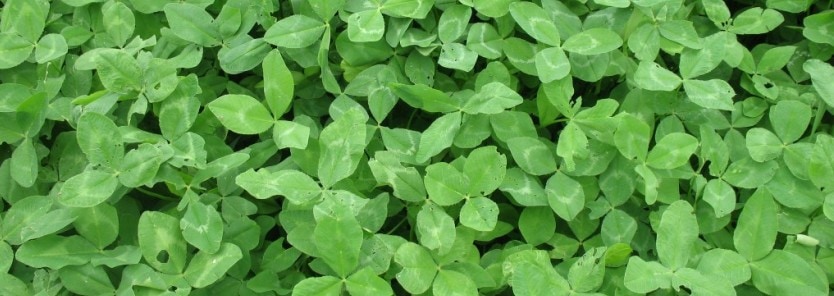If you want perennial clover plots that last for years and will be very attractive to whitetails, turkey and other critter, they need to be cared for properly. Here are the three main tasks you can do for the best perennial plots possible.
Mow Your Plots
Mowing perennials will help fight unwanted competition from grass and weeds and will promote new, more palatable growth and stolon production. How often and how frequent perennials should be mowed is more of an art than a science; usually at least three times during the growing season will suffice. White clovers will do well when mowed aggressively and often during the cooler periods of the growing season or when ample moisture is available. However, during hot, dry times they should be mowed less often and not as short, or maybe not mowed at all and left to go to seed.
Fertilize
Fertilizing at least once per growing season is a must, but some choose to fertilize during the spring and the late summer or fall. Remember that legumes produce their own nitrogen, so use a fertilizer that contains NO NITROGEN.
Treat with a Grass Herbicide When Necessary
Mowing will help keep broadleaf weeds at bay, and grasses to some extent, but grasses may still become a problem. If so, treat with a grass-specific herbicide that contains the active ingredient of either clethodim or sethoxydim like Weed Reaper Herbicide. Weed Reaper comes in an easy to use 16 ounce,1 acre size and it already has the surfactant included so there’s no pain having to mix other chemicals. It will kill annual & perennial grasses and grassy weeds in your perennials or any broadleaf crop. Weed Reaper is “rain-fast” within one hour of application.









